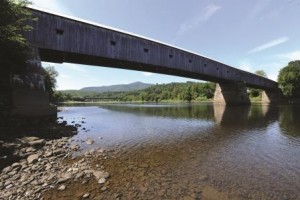27 Windsor Village Historic District, Main Street, Windsor, Vermont
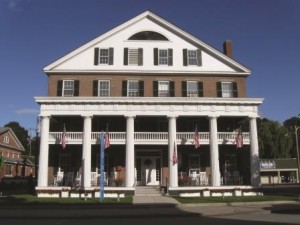 The first Constitution of the “Free and Independent State of Vermont” was adopted in July 1777, at Elijah West’s Windsor Tavern, becoming the first in the country to prohibit slavery and to establish universal manhood suffrage. West’s Tavern was restored to become “The Old Constitution House,” featuring period rooms showcasing its early tavern days, a Constitutional interpretive area in the Tea Room, and a historical artifacts collection.
The first Constitution of the “Free and Independent State of Vermont” was adopted in July 1777, at Elijah West’s Windsor Tavern, becoming the first in the country to prohibit slavery and to establish universal manhood suffrage. West’s Tavern was restored to become “The Old Constitution House,” featuring period rooms showcasing its early tavern days, a Constitutional interpretive area in the Tea Room, and a historical artifacts collection.
28 American Precision Museum – Robbins & Lawrence Armory and Machine Shop, 196 Main Street, Windsor, Vermont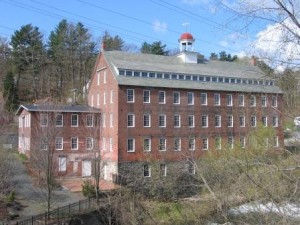
The American Precision Museum, located within the 1846 Robbins & Lawrence Armory building, preserves the heritage of the mechanical arts, celebrates the ingenuity of our mechanical forebears, and explores the effects of their work on our everyday lives. The Museum holds the largest collection of historically-significant machine tools in the nation.
29 Old Constitution House, 16 North Main Street, Windsor, Vermont
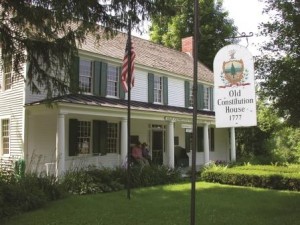 The first Constitution of the “Free and Independent State of Vermont” was adopted on July 8, 1777, at Elijah West’s Windsor Tavern, becoming the first in the country to prohibit slavery and to establish universal manhood suffrage. West’s Tavern was restored to become “The Old Constitution House,” featuring period rooms showcasing its early tavern days, a Constitutional interpretive area in the Tea Room, and a historical artifacts collection.
The first Constitution of the “Free and Independent State of Vermont” was adopted on July 8, 1777, at Elijah West’s Windsor Tavern, becoming the first in the country to prohibit slavery and to establish universal manhood suffrage. West’s Tavern was restored to become “The Old Constitution House,” featuring period rooms showcasing its early tavern days, a Constitutional interpretive area in the Tea Room, and a historical artifacts collection.
30 Cornish-Windsor Covered Bridge, Spanning the Connecticut River between Cornish, NH and Windsor, VT
While the Cornish-Windsor Covered Bridge, built in 1866, can no longer claim the US honor of longest covered bridge, at over 450 feet, it certainly retains its place in New England’s heritage, as well as its 1970 designation as a National Historic Civil Engineering Landmark by the American Society of Civil Engineers and in the National Register of Historic Places.
31 Saint-Gaudens National Historical Site, Saint Gaudens Road, Cornish, New Hampshire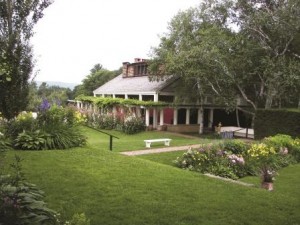
Tucked away within the peaceful woods and nearby Connecticut River sits the 33-acre estate of Augustus Saint-Gaudens (1848–1907), one of America’s most accomplished sculptors. Saint-Gaudens National Historical Site features several guided tours, a unique self-guided tour, and trail system.
32 Trinity Church, 833 Route 12A, Cornish, New Hampshire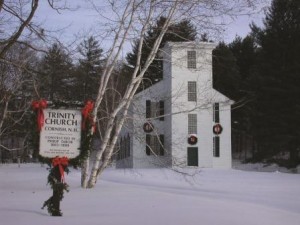
Simplicity is the hallmark of many churches in New England, creating a picturesque tranquility within the mountains, rolling hills and foliage. Trinity Church in Cornish, New Hampshire is no exception.
33 Claremont Opera House/ City Hall, 58 Opera House Square, Claremont, New Hampshire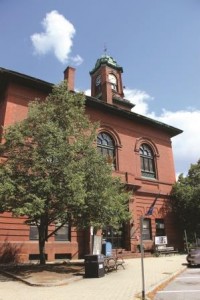
In a time when small cities abandon their old buildings for what appears as new and better, Claremont, New Hampshire exemplifies a delicate balance of moving forward while honoring the heritage of their textile and manufacturing roots. At the head of the Claremont center green, known as Broad Street Park, sits the city’s landmark building, Claremont City Hall and Opera House, completed in 1897 by architect Charles A. Rich.
34 Claremont Historic District, Claremont, New Hampshire
The Claremont Historic District, also known as the  Claremont Multiple Resource Survey, is a successful reuse project and vibrant reminder of the city’s earliest development from a traditional New England village to an urbanized industrial community. The historic district includes 54 structures and two public spaces, as well as 19 individual properties.
Claremont Multiple Resource Survey, is a successful reuse project and vibrant reminder of the city’s earliest development from a traditional New England village to an urbanized industrial community. The historic district includes 54 structures and two public spaces, as well as 19 individual properties.
35 Weathersfield Center Historic District, Town of Weathersfield, Windsor County, Vermont
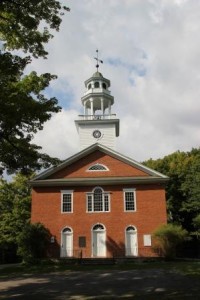 The Weathersfield Historic District sits atop a small hill of maple trees within the Connecticut River Valley of Vermont. Although comprised of only the Meeting House, and the Reverend Daniel Foster House and Old Stone Pound across the street, they are all in the geographical center of Weathersfield and reflect the early history of the town.
The Weathersfield Historic District sits atop a small hill of maple trees within the Connecticut River Valley of Vermont. Although comprised of only the Meeting House, and the Reverend Daniel Foster House and Old Stone Pound across the street, they are all in the geographical center of Weathersfield and reflect the early history of the town.
36 Ascutney State Park, 1826 Back Mountain Road, Windsor, Vermont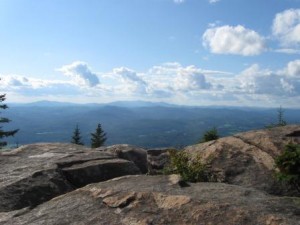
Completed in 1939 by President Roosevelt’s Civilian Conservation Corp, Mount Ascutney State Park, now listed on the National Register of Historic Places, features 2,000 acres of pristine forest, complete with abundant wildlife, hiking trails, waterfalls, and camping sites.
37 Cady Mauseleum, Town of West Windsor, Windsor County, Vermont
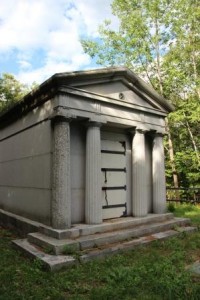 For native son Daniel Leavens Cady, known as “The Poet Laureate of Vermont,” the last place he rested his head was high atop a hill in his hometown of West Windsor, Vermont. Cady spent $38,000 to replicate Napoleon Bonaparte’s final resting place. With a coffin crafted from Florida cypress and a mausoleum nestled within the cow pasture where he played as a boy, Cady would be laid to rest in a spot visible to many areas in town, void of his wife or any family. Today, large pines and brush hide the mausoleum from public view.
For native son Daniel Leavens Cady, known as “The Poet Laureate of Vermont,” the last place he rested his head was high atop a hill in his hometown of West Windsor, Vermont. Cady spent $38,000 to replicate Napoleon Bonaparte’s final resting place. With a coffin crafted from Florida cypress and a mausoleum nestled within the cow pasture where he played as a boy, Cady would be laid to rest in a spot visible to many areas in town, void of his wife or any family. Today, large pines and brush hide the mausoleum from public view.
Some might have considered his actions the height of arrogance. Fate, it seemed, had a sense of humor. Cady died on April Fools’ Day in 1934, at the age of 73, having lived a full life of professionalism for the law and passion for his Vermont.
At age 50 Cady retired from the professional aspect of his life in pursuit of his passion to write about the beauty and uniqueness of Vermont. He relocated to Burlington, marrying widow Mary (Tanner) Wells in 1913, reported to have been worth over $1.5 million.
His first book of poems, “Stray Breaths of Northeast Song,” was published in 1905, followed by “Maize and Milkweed: Fifty-Two Stalks” in 1916. Cady’s most critically acclaimed series was his “Rhymes of Vermont Rural Life,” in four volumes, published between 1919 and 1934, in which he wrote of the climate, habits, scenery and everyday routines as he remembered them.
38 Damon Hall, Hartland, Vermont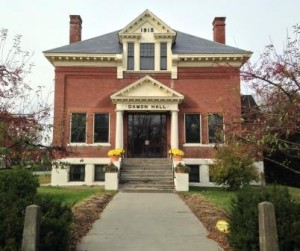
Standing proudly in the center of Hartland village is an example of the last generation of monumental public buildings in Vermont. Damon Hall, a Colonial Revival style town hall was built in 1915 to honor the philanthropic and civic spirit of the Damon family.
